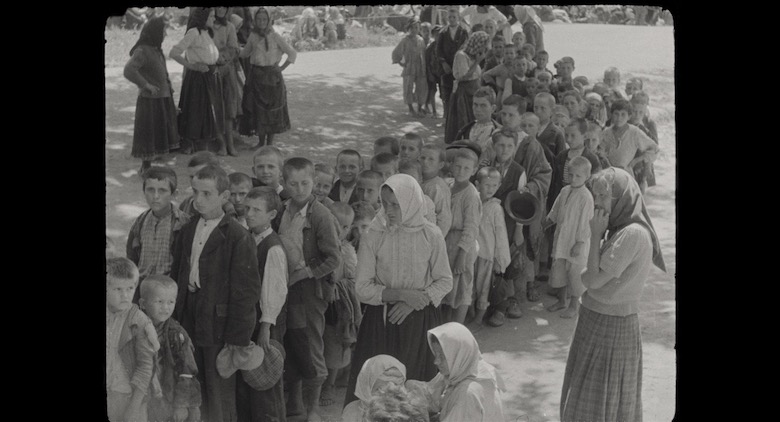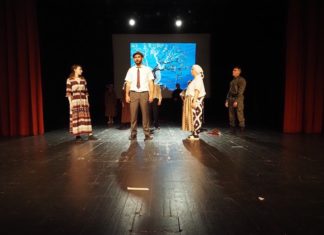Although almost two years have passed since the premiere of The Diary of Diana Budisavljević on July 18th 2019 at the Pula Film Festival, the topic of innocent people’s suffering due to their genetic heritage, different religions, nationalities, skin color, culture and tradition is actually timeless. The ‘others’ and the different – Jewish, Orthodox and Roma people – were imprisoned by the Ustasha authorities during the Independent State of Croatia in concentration camps such as Loborgrad, Gradiška and Jasenovac. To keep innocent people like that for some faith, children and mothers, and a faith which we were born into and because of which we paid a price, said one of the older women who walked through the area of the former Jasenovac camp, where she was brought with her mother, sister and three brothers when she was seven years old, and who was saved precisely by Diana Budisavljević through her operation of getting children out of concentration camps.
An Austrian by nationality, Diana Budisavljević, together with her Serbian husband, who was a doctor by profession, had daughters and a granddaughter, lived in Zagreb and was a member of the upper bourgeoisie. In 1941, she found out about the concentration camps set up by the Independent State of Croatia, where Jewish and Serbian women were taken with their children, who were dying of hunger and disease in extremely inhumane conditions. The Jewish community engaged in sending aid to Jewish women, but no one was taking care of the Serbian women and their children. After unsuccessfully turning to the authorities, the church, and the Red Cross for help, she decided, together with a few friends, to take action to collect aid and rescue children from the concentration camps. She asked the authorities for permission in order to legalize the whole operation, but did not get it because the head of the Department for the Protection of Children told her that no one had a permit to work with the camps. However, she did not give up even when her husband asked her to. He had to register with the police, received an ID card that read “Serb 498” and warned her of the danger. She did not give up even when she realized that she was risking her own life.
She decided to keep a diary of “D.B.” actions to have an overview of what has been collected and delivered in aid, and what is still missing and needed. Thanks to this diary, which was found by her granddaughter after her death, her family and the public learned about her deeds, which saved more than 10 000 children from certain death during World War II. She kept a file for each child individually so that their family could find them after the war – if there were any surviving members at all – and so that when the children grew up they could find out where they came from, who their parents were, and when and how they lost them. . But after the war in 1945, the communist government confiscated her file and it was never found again. However, some children managed to reconstruct their traumatic past, including Živko, Milorad, Zorka and Nada, who returned to the former concentration camp almost 80 years later to share their memories.
They brought in a barrel with corn porridge – rotten and bitter corn flour, and inside a little potato and beans. That was all, once a day. It was awful food, not even pigs would eat it. When there were potatoes inside, we took them out with our finger and ate them, and the beans were all crumpled and not cooked. Smaller children were dying, they wouldn’t even know how to talk, and that’s the only way children of my age who were a little stronger somehow survived. The little ones all got terrible diarrhea and died because of it”, Zorka said in a trembling voice. I came with my mom, sister and three brothers. My sister was separated first, I never knew where she ended up, they said she was going to Germany to work. To the left, on one side, they separated the young and the healthy, and on the other side, the sick, the pregnant and the old. Later, they knew where they were going with whom, to Germany, to the camp, to the Sava river.
When one imagines that more than seventy years have passed since the day I was here, then it is no wonder that I see such tall and large trees, says Milorad. For the first three days of his arrival at the camp, he received no food or drink, so he and the other children drank accumulated rainwater. The only food he and the other children put in their mouths were corn kernels given to them by some women, which they tried to soak by holding them in their mouths. The picture remained and I think I will keep it while I am alive”, says Milorad, visibly shaken even after so many years. Me, my brother and my uncle’s brother were separated together. I was ten, my brother seven, and my uncle’s brother eight. We didn’t know what happened to our sisters, one of whom was thirteen and the other eight. The most painful thing for me is my sisters’ stay here. I spent seventy years thinking about her, but I never had the strength to come back to this place. And then, for the seventieth anniversary of my family’s suffering, we finally commemorated it on the common grave and we said it’s been seventy years, we didn’t find your grave, but that’s why we mention you here, so that you stay with your family for eternity, Milorad concludes through tears.
I know nothing about myself, when was I born, where am I from, who my parents are. I only know the name Živko and the number 1128 on the plaque from the camp, says Živko, who spent his whole life going through various archives, trying to find something about himself and the family he came from.
Because she was of Austrian descent and spoke German, Diana Budisavljević managed to reach German officers and to eventually – through General von Horstenau – obtain permission to transport children from the camp from General Security Director Eugen Dida Kvaternik. Upon arriving at the camp along with several other women, she first listed the children whose mothers had already been taken to Germany. They were also assigned a doctor who had to assess whether each child was fit for transport. He soon realized that this was a rescue mission, so he declared every child capable, Diana Budisavljević wrote in her diary. Healthier boys are dressed in Ustasha uniforms and we must not list them. They will allegedly take part in the shooting of a propaganda film. The doctor used the carelessness of the guards to take us to the children’s hospital. And we took those children too, even though there was no chance of saving them anymore. Most of them died during the afternoon. She managed to transport children from the camp on several occasions, and about 5 000 children were placed in rural families with the help of the church.
This shocking film was directed by Dana Budisavljević, a producer and director with several award-winning documentaries under her belt, including Nije ti život pjesma Havaja (2012), which won the Audience Award at ZagrebDox in 2012, and the Best Hope Award at Dokufest in Prizren in 2012. The film Sve 5 (2004) won her the Grand Prix at the Days of Croatian Film in 2005, and four more awards at international festivals. The same surname Budisavljević that the director shares with the main protagonist of the film and heroine Diana led her to the book “Diary of Diana Budisavljević” published in 2003 by the Croatian State Archives, and which Nataša Jovičić – the director of the Memorial site Jasenovac – called her attention to in 2010. Thus, Dana set out to explore this unknown historical story that premiered on movie screens a decade later.
This feature-length historical film has won numerous awards, including, for example, the award for best film at the Pula Film Festival, the award for best director, editing and music, the audience award, and the main award for best film at the Waterloo International Historical Film Festival. Also, with the purpose of establishing gender equality in European film, this film title is among over 50 films directed by women included in the publication “Golden Album – Directors” of the co-production fund Eurimages.
The combination of feature-documentary scenes renders the film realistic and authentic. It is precisely the documentary scenes that erase every illusion and deeply affect the viewer, and the images of starving, sick and dying children are forever etched in their memory. At the same time, the viewer is inspired by the humanity and courage of a woman who listened to stories that horrified and frightened her, but who did not indulge in feelings of helplessness, but persistently went from door to door, never giving up the idea of rescuing innocent children. Her character was brilliantly embodied by Alma Prica. It is vile when a man comes to a man and chooses the way to kill him, Zorka concludes in the film, and this realization really leaves the viewer with a feeling of bitterness. However, it is encouraging to know that in every time period there are people like Diana Budisavljević, thanks to whom our human world survives.












